We may not have the course you’re looking for. If you enquire or give us a call on 01344203999 and speak to our training experts, we may still be able to help with your training requirements.
We ensure quality, budget-alignment, and timely delivery by our expert instructors.
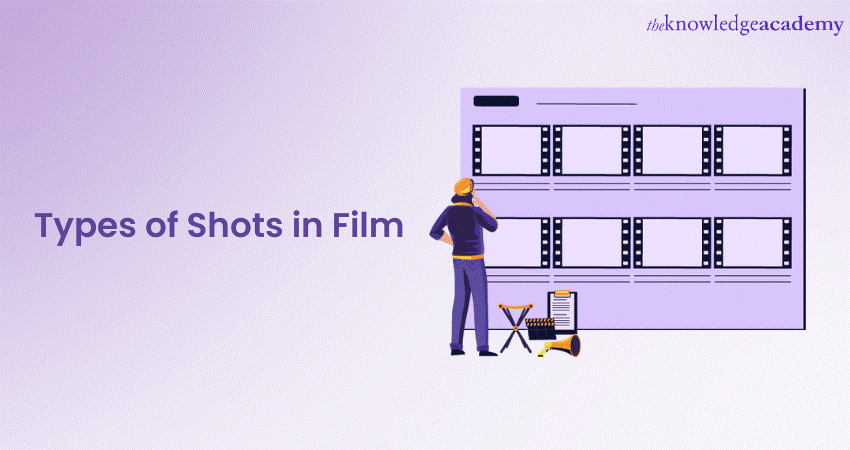
It can be confusing to differentiate between the various Types of Shots in Film and angles. When creating a list of Camera Shots, Filmmakers or video creators need to understand the fundamental categories of Shots. These are based on characteristics like how big the shot is, how it's framed, whether the camera moves, the camera equipment used, and how much of the image is in focus.
As the Film industry grows, the technology used in Film also gets updated. In this blog, we will discuss the Types of Shots in Film you should be aware of. We'll also provide examples from movies.
Table of Contents
1) What are Camera Shots?
2) Types of Shots in Filmmaking
3) Signature Shots of famous directors
4) Analysis of iconic Film scenes
5) How Shot selection enhances storytelling
6) Conclusion
What Are camera Shots?
In Filmmaking, a Camera Shot is a single, continuous view from a camera perspective. Each Shot has a specific purpose and contributes to the overall narrative. Understanding these Shots is essential for effective storytelling and is a key aspect of various filmmaking techniques.
Camera movements, such as pans and tilts, are closely linked to Camera Shots. They add dynamism and dimension to Shots, making them more engaging.
Types of Shots in Filmmaking
There are various Shots that Directors and Cinematographers employ to craft compelling cinematic experiences. These Types of Shots in Film enhance the visual storytelling to a large extent and are integral to the filmmaking process. Given below is a comprehensive list:
Long Shot (LS)
A Long Shot, often called a Wide Shot, shows a broad view of the scene. It's like taking a step back to see everything in one frame. It is used to establish the location and give a sense of the surroundings. They help you understand where things are happening in the story.
Medium Shot (MS)
In a Medium Shot, you see a person or people from about their waist up. It's like having a conversation with someone, and you can see their body language and expressions. Medium Shots are used for dialogues and interactions between characters. They help you connect with the characters better.
Close-Up (CU)
Close-Ups zoom in really close to something, usually a person's face. It's like seeing every little detail, like their eyes and lips. Close-ups are used to capture strong emotions, highlight important moments, or focus on specific things. They make you feel intimately connected to what you're seeing.
Extreme Close-Up (ECU)
An Extreme Close-Up goes even closer, showing only a tiny part of something, like an eye or a hand. It's super close and dramatic. Extreme Close-Ups are used to make things look very important and create tension. They focus on the tiniest details and emphasise their significance.
Pan
Pan means moving the camera smoothly from side to side, like turning your head. It's used to show what's happening in a wider area or to follow something that's moving horizontally. Panning Shots help you get a sense of the surroundings and follow the action.
Tilt
Tilt is when the camera looks up or down without moving its position. It's like tilting your head to see something above or below you. Tilt Shots are used to show tall things like buildings or to reveal things at different heights in the scene. They help you look up or down within a frame
Tracking Shot (Dolly Shot)
A tracking Shot is like the camera riding on a moving platform, smoothly following people or things as they move. It's used to create a sense of movement and flow. Tracking Shots make you feel like you're right there with the characters, moving along with them.
Handheld Shot
Imagine holding the camera in your hands while Filming. Handheld Shots are a bit shaky, which adds a sense of realism and excitement. They make you feel like you're part of the action, like you're right there with the characters, capturing the moment as it unfolds.
Explore your passions with our diverse range of Hobbies & Interests Courses. Discover your new hobby today!
POV Shot (Point of View)
A POV Shot shows you what a character sees, as if you're looking through their eyes. It helps you understand what the character is feeling and thinking. POV Shots immerse you in the character's perspective, making you feel like you're inside their head and experiencing the story from their point of view.
Signature Shots of famous Directors
Visionary storytellers often develop recurring Shots or visual elements that become their unique trademarks. Let's explore some well-known Directors and their trademark Camera Shots that define their cinematic style, often made possible by their choice of filmmaking equipment.
Alfred Hitchcock: Hitchcock was known for his suspenseful storytelling and the "Dolly zoom" Shot, which creates a sense of vertigo by zooming in while moving the camera backward.
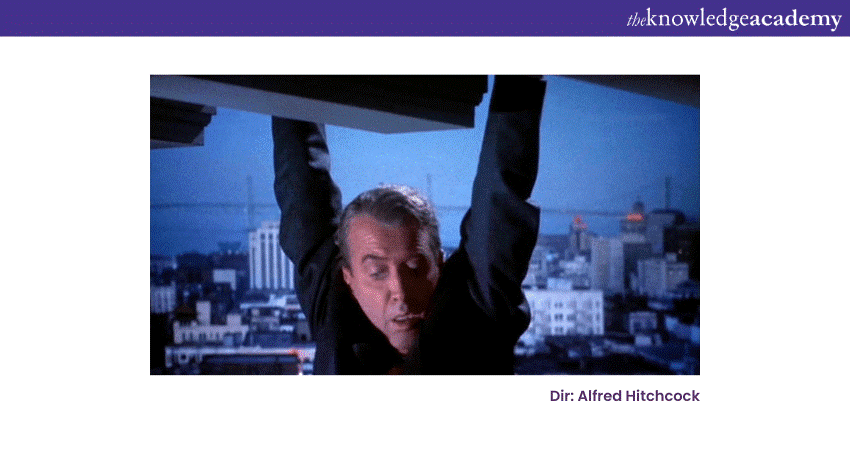
Movie name: Vertigo
Stanley Kubrick: Kubrick often used the "One-point perspective" Shot, where everything in the frame converges towards a single point, creating a sense of unease and symmetry in his Films.
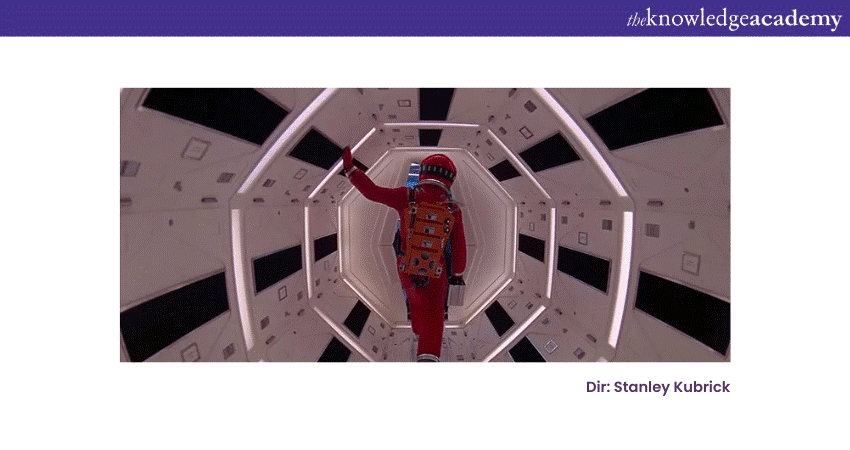
Movie name: 2001: A Space Odyssey
Steven Spielberg: Spielberg is famous for his use of the "Spielberg Face," a Shot where characters react in awe or wonder, often with backlighting to emphasise their emotions.
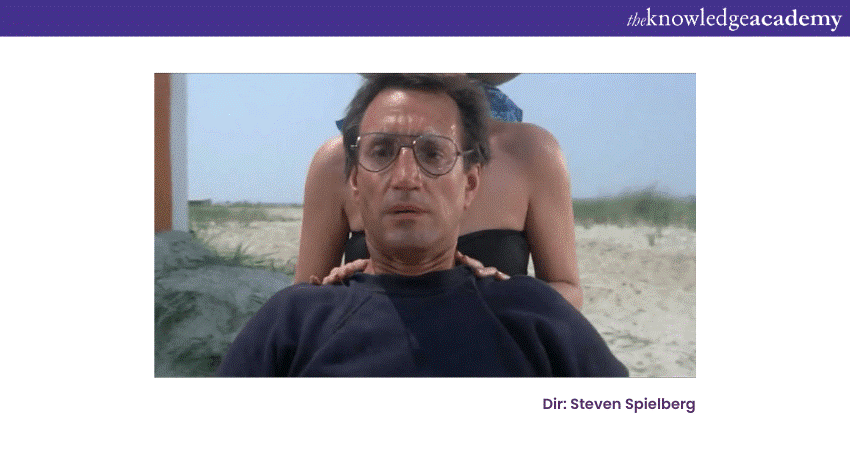
Movie name: Jaws
Quentin Tarantino: Tarantino frequently employs "Trunk Shots," showing characters from inside the trunk of a car, creating tension and anticipation.
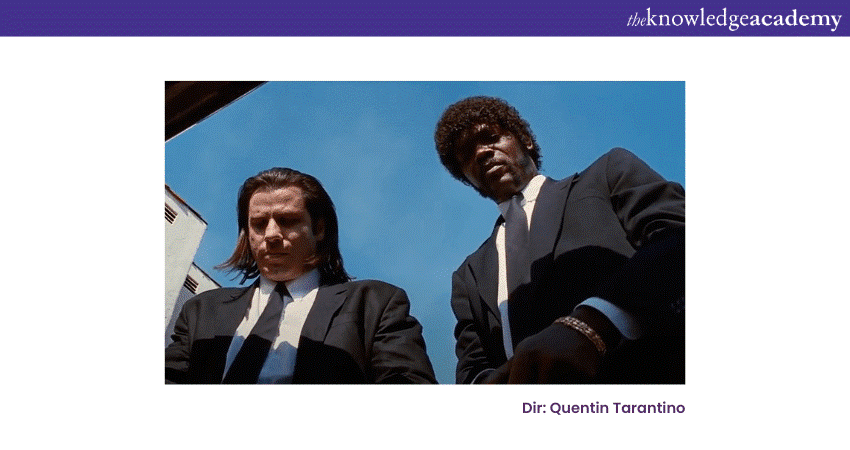
Movie name: Pulp Fiction
Martin Scorsese: Scorsese is known for his "Tracking Shots," which involve the camera following characters through long, unbroken sequences, adding energy and immersion to his Films.
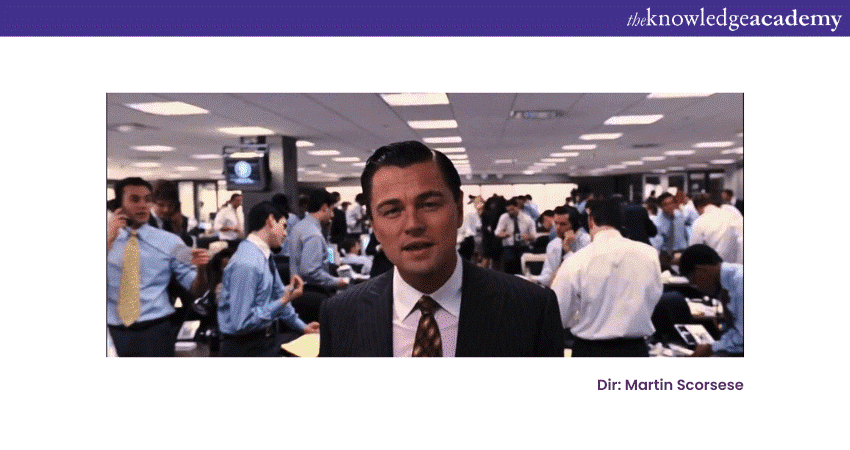
Movie name: The Wolf of Wall Street
Wes Anderson: Anderson's signature is the "Symmetrical Shot," where scenes are meticulously arranged with perfect balance and symmetry, giving his Films a unique visual style.
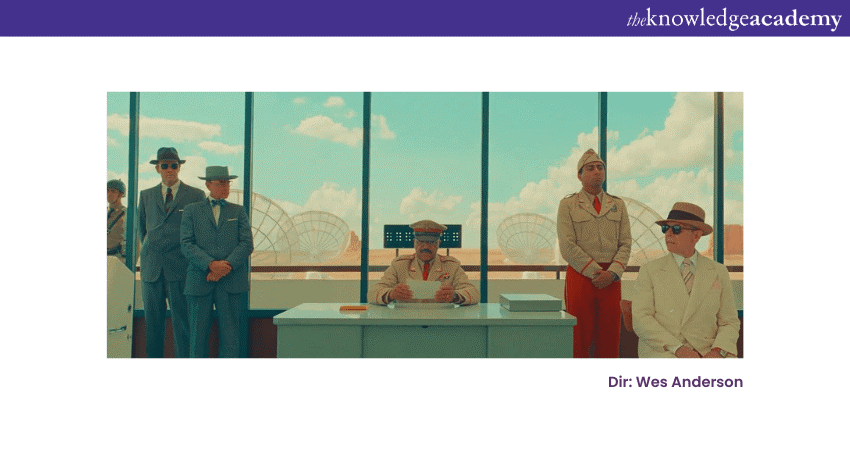
Movie name: Asteroid City
Christopher Nolan: Nolan often uses "Rotating Shots," where the camera spins around a character or object, adding a disorienting yet captivating element to his storytelling.
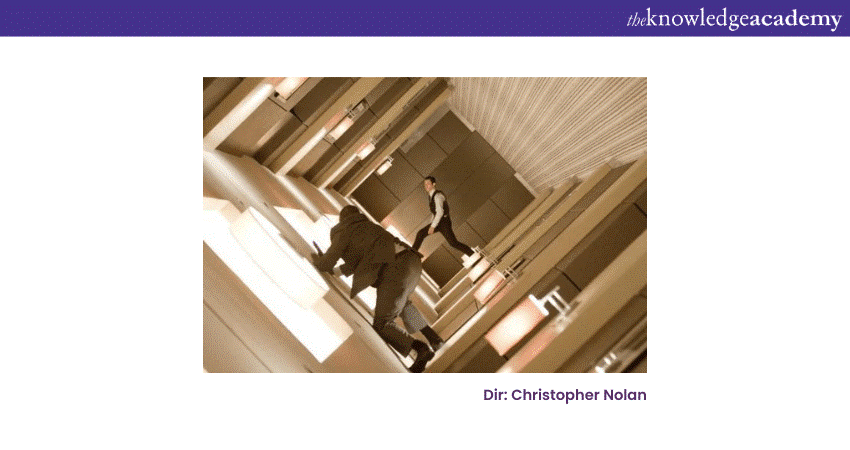
Movie name: Inception
Akira Kurosawa: Kurosawa's "Wipe transition" Shot, where one scene wipes away another, is a distinctive feature of his Films, symbolising his mastery of visual storytelling.
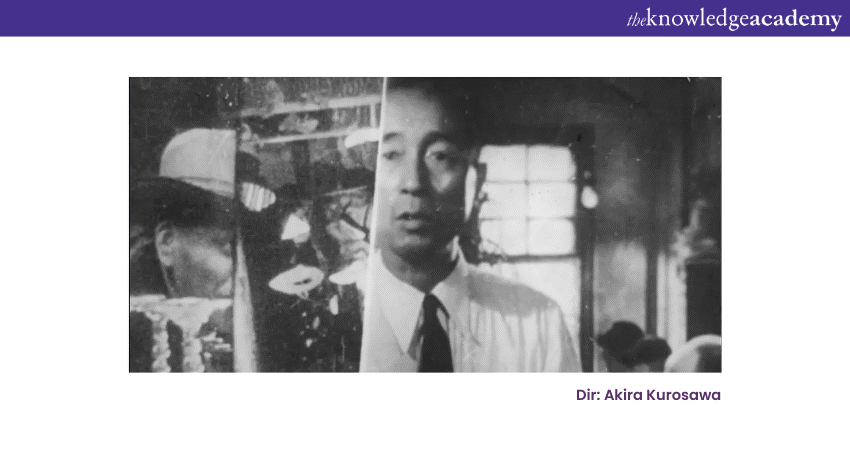
Movie name: Ikiru
David Fincher: David Fincher is known for his meticulous attention to detail and often employs "Overhead Tracking Shots." These Shots involve the camera moving smoothly above characters or scenes, providing a unique perspective and enhancing the mood of his Films, which often delve into psychological and suspenseful themes.
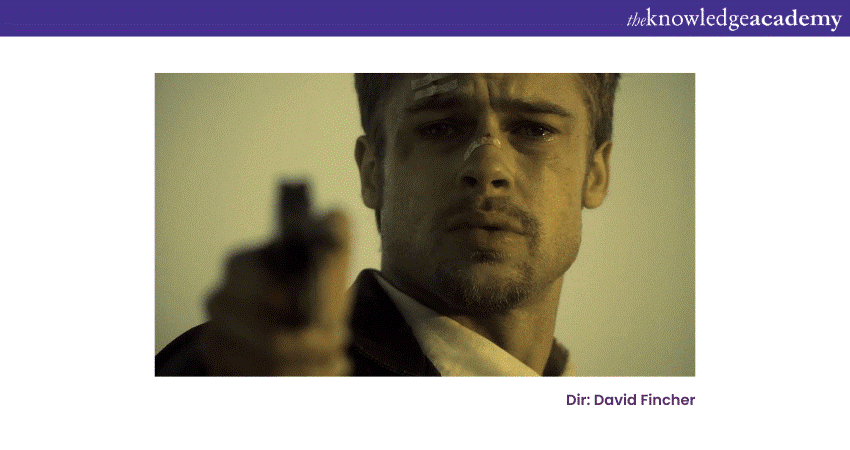
Movie name: Seven
Francis Ford Coppola: Coppola is recognised for his use of "Slow Zoom-Ins" on characters' faces during moments of deep contemplation or revelation. This gradual zoom emphasises their emotions and inner turmoil, adding depth to his Films, such as "The Godfather" series.
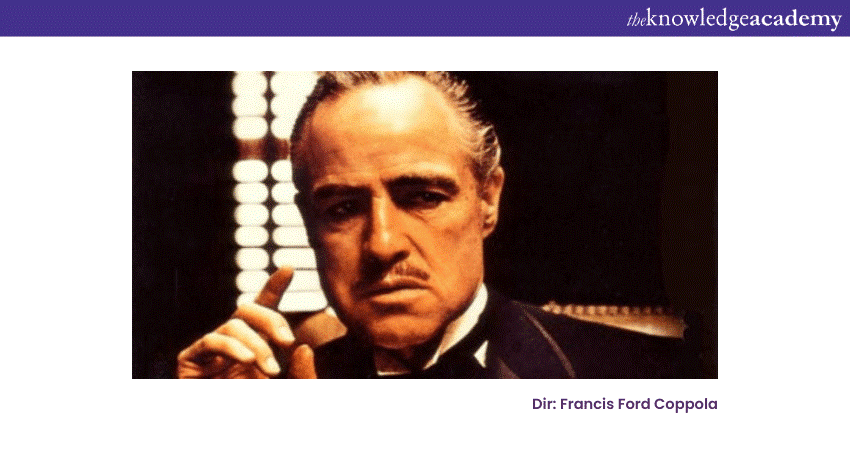
Movie name: The Godfather
Analysis of iconic Film scenes
Let's go deep into the analysis of iconic Film scenes, exploring what makes them memorable and their impact on cinema:
Opening Scene of "Citizen Kane" (1941)
In this iconic scene, director Orson Welles introduces us to the enigmatic character of Charles Foster Kane through a series of Extreme Close-Up Shots. These Shots of Kane's dying word, "Rosebud," followed by the shattering of a snow globe, set the stage for the mystery that unfolds.
Analysis: The use of close-ups and symbolism in this scene foreshadows the Film's central theme of the elusive nature of Kane's happiness. It showcases Welles' mastery of visual storytelling and the power of a single, cryptic word to drive an entire narrative.
Shower Scene from "Psycho" (1960)
Alfred Hitchcock's infamous shower scene is a masterclass in suspense and editing. The rapid succession of Close-Up Shots, accompanied by Bernard Herrmann's screeching score, creates an intense and terrifying experience for the viewer.
Analysis: This scene is celebrated for its innovative editing techniques and its ability to shock and unsettle the audience. Hitchcock's use of quick cuts and the suggestion of violence rather than explicit gore set a new standard for horror Filmmaking.
Dinner Table Scene in "Pulp Fiction" (1994)
Quentin Tarantino's signature dialogue-driven style shines in the memorable "Royale with Cheese" scene. The characters engage in casual banter about fast food and European culture, while the tension builds in the background.
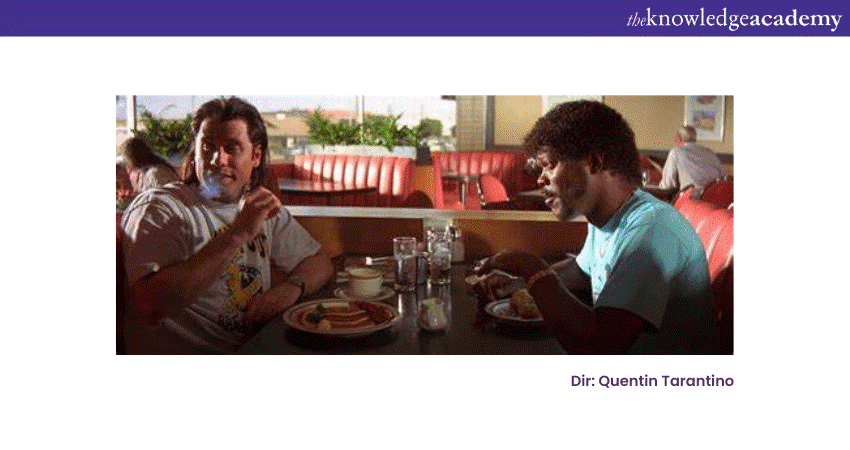
Analysis: This scene encapsulates Tarantino's knack for blending everyday conversations with underlying suspense. The non-linear storytelling and witty dialogue contribute to the Film's unique narrative structure and character development.
The "Here's Johnny!" Scene in "The Shining" (1980)
Stanley Kubrick's adaptation of Stephen King's novel includes the chilling moment when Jack Nicholson's character, Jack Torrance, breaks through a door with an axe, uttering the famous line "Here's Johnny!"
Analysis: This scene is an enduring symbol of horror cinema. Kubrick's use of a wide-angle lens distorts Nicholson's face, intensifying the sense of madness and terror. The line itself, delivered with manic energy, became an instant classic.
The T-Rex Attack in "Jurassic Park" (1993)
Director Steven Spielberg's groundbreaking use of CGI is showcased in the T-Rex attack scene. The colossal dinosaur emerges in the rain, and the characters' reactions create a palpable sense of awe and fear.
Analysis: This scene revolutionised special effects in cinema, setting a new standard for the seamless integration of CGI and practical effects. Spielberg's mastery lies in his ability to make the fantastical feel real and emotionally engaging.
Ending Scene of "The Shawshank Redemption" (1994)
The poignant final scene, where Andy Dufresne escapes through a sewage tunnel to freedom, is a testament to Director Frank Darabont's storytelling prowess. The Shot of Andy standing in the rain, arms outstretched, is an iconic image of hope and redemption.
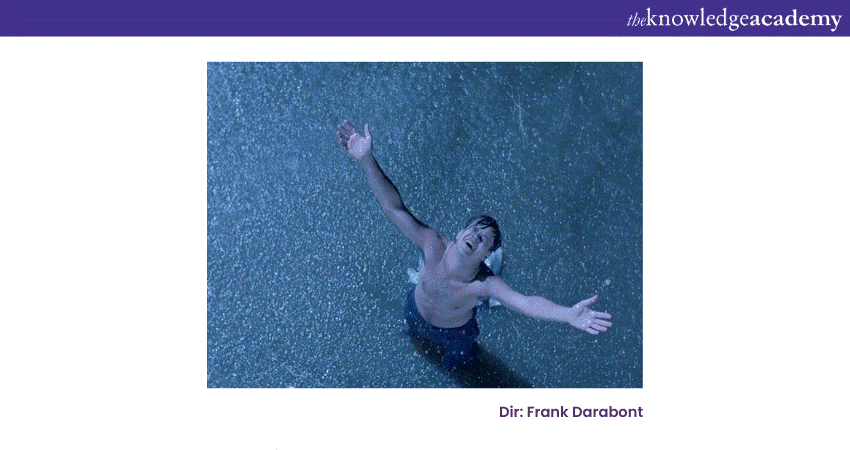
Analysis: This scene is celebrated for its emotional impact and symbolism. The rain symbolises cleansing and rebirth, while Andy's liberation serves as a powerful metaphor for the triumph of the human spirit over adversity.
How Shot selection enhances storytelling
Various types of Shots and angles in Film can largely impact the storytelling process. It improves the visual language and give depth to the movie. Here’s how Shot selection enhances story selection:
a) Setting the scene: Shot selection helps set the scene and lets the audience know where and when the story is happening. For example, a Wide Shot shows a whole place, while a close-up focuses on one thing.
b) Revealing emotions: Different Shots can show how characters feel. A close-up of a smiling face tells us someone is happy, while a close-up of a worried face tells us they're concerned.
c) Building suspense: Shot selection can build suspense. Imagine a character in a dark room. A Shot that slowly moves closer to their face can make the audience feel tense and curious about what might happen next.
d) Changing perspectives: Switching between Shots can change the audience's perspective. For instance, a Point of View (POV) Shot makes us see through a character's eyes, letting us experience the story from their viewpoint.
e) Highlighting details: Some Shots are perfect for showing important details. An extreme close-up can reveal a hidden object, like a key, which might be crucial to the plot.
f) Moving the story: The way Shots move can also tell a story. A Tracking Shot, where the camera follows characters, can make us feel like we're right there with them, moving along in the narrative.
g) Creating atmosphere: Shot selection affects the atmosphere of a scene. For example, a low-angle Shot looking up at a character can make them seem powerful, while a high-angle Shot looking down can make them appear vulnerable.
h) Connecting with characters: When we see characters up close or from their perspective, Shot selection helps us connect with them on an emotional level. It's like getting inside their heads and understanding their experiences.
Conclusion
The various types of Shots in Film are the essential tools that Filmmakers use to convey their stories and emotions visually. Each type of Shot serves a distinct purpose, from setting the scene to revealing character emotions and advancing the plot. Understanding these Shot types is fundamental for anyone interested in Filmmaking or appreciating the art of cinema.
Unlock your Filmmaking potential with our Filmmaking Masterclass. Join now!
Frequently Asked Questions
What are the Other Resources and Offers Provided by The Knowledge Academy?

The Knowledge Academy takes global learning to new heights, offering over 3,000 online courses across 490+ locations in 190+ countries. This expansive reach ensures accessibility and convenience for learners worldwide.
Alongside our diverse Online Course Catalogue, encompassing 19 major categories, we go the extra mile by providing a plethora of free educational Online Resources like News updates, Blogs, videos, webinars, and interview questions. Tailoring learning experiences further, professionals can maximise value with customisable Course Bundles of TKA.
Upcoming Business Skills Resources Batches & Dates
Date
 Filmmaking Course
Filmmaking Course
Fri 4th Apr 2025
Fri 6th Jun 2025
Fri 8th Aug 2025
Fri 3rd Oct 2025
Fri 5th Dec 2025






 Top Rated Course
Top Rated Course



 If you wish to make any changes to your course, please
If you wish to make any changes to your course, please


